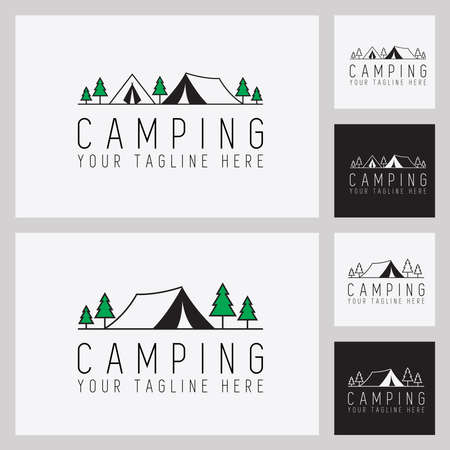Overview of Car Camping in the U.S.
Car camping has become a beloved American pastime, blending the thrill of the open road with the comforts of home. For adventure-seekers, it’s not just about getting from point A to point B—it’s about embracing spontaneity and exploring hidden gems across diverse landscapes. Whether you’re drawn to mountain vistas, desert sunsets, or lakeside retreats, car camping opens the door to a flexible, immersive outdoor experience. The choice between free and paid car camping sites can truly shape your journey: from rustic boondocking on public lands to amenity-rich campgrounds with all the bells and whistles. Understanding these options is key to crafting a trip that matches your style, budget, and sense of adventure.
2. Pros and Cons of Free Car Camping Sites
If you’re dreaming of spontaneous road trips and waking up to stunning, untouched views, free car camping sites—often called boondocking or dispersed camping—might sound like a dream come true. But before you pack your bags and hit the open road, it’s important to weigh the benefits against the challenges that come with these no-cost options.
Benefits of Free Car Camping Sites
| Benefit | Description |
|---|---|
| Budget-Friendly | No nightly fees means more cash for local eats, gas, and experiences. |
| Secluded Settings | Enjoy peaceful vibes, starry nights, and fewer neighbors—perfect for those seeking solitude. |
| Flexibility & Freedom | No reservations needed; pull up and set up camp wherever its allowed. |
| Adventure & Discovery | Explore off-the-beaten-path locations and connect more closely with nature. |
Challenges to Consider
| Challenge | Description |
|---|---|
| Limited Facilities | Don’t expect restrooms, potable water, or trash services—bring your own supplies and pack out all waste. |
| Access Issues | Remote spots may require high-clearance vehicles or 4WD. Some roads can be rough or impassable in bad weather. |
| Safety Concerns | Lack of nearby help or cell service can be risky if you’re traveling solo or in unfamiliar areas. |
| Regulation Awareness | You’re responsible for knowing where overnight parking is legal. Fines are possible if you camp in restricted zones. |
A Realistic Take on Boondocking in America
The American West is famous for its vast public lands managed by agencies like the BLM (Bureau of Land Management) and the US Forest Service. Here, boondocking is a cherished tradition for many outdoor lovers. However, rules vary by state and district, so always double-check signage and local guidelines before settling in. Remember: Leave No Trace isn’t just a motto—it’s essential for keeping these wild spaces available for everyone.
Is Free Car Camping Right for You?
If you crave freedom, adventure, and don’t mind roughing it without amenities, free car camping sites offer an unbeatable way to experience America’s landscapes on your own terms. Just make sure you plan ahead, stay safe, and respect the land so future travelers can enjoy it too.

3. Benefits and Drawbacks of Paid Car Camping Sites
Amenities: Comforts That Elevate Your Stay
One of the standout perks of paid car camping sites is their wide range of amenities. Think hot showers, flush toilets, electrical hookups, Wi-Fi hotspots, and even communal kitchens or laundry facilities. These comforts can make your outdoor experience feel a little more like home—especially after a long day of hiking or exploring. For families or travelers who appreciate an extra layer of convenience, these amenities are a game-changer. However, keep in mind that the more luxurious the campground, the higher the nightly rate tends to be.
Security: Peace of Mind Comes Standard
Safety is another key advantage at most paid campgrounds. Many sites have on-site hosts, gated entrances, well-lit pathways, and patrols that help deter theft or unwanted visitors. This added security can mean everything when you’re traveling solo or with young children. Still, it’s important to remember that no campground is completely immune to petty crime, so always lock up valuables and practice common sense.
Reservation Systems: Plan Ahead for Stress-Free Travel
Unlike free campsites—which often operate on a first-come, first-served basis—paid car camping locations usually offer online reservation systems. This allows you to plan your trip with confidence, knowing you’ll have a guaranteed spot waiting for you even during peak seasons. On the flip side, this means you’ll need to plan ahead and sometimes pay booking fees, which can reduce spontaneity in your travel plans.
Community Feel: Connect With Like-Minded Adventurers
Paid campgrounds often attract a diverse crowd of outdoor lovers, from weekend warriors to seasoned vanlifers. Many offer communal fire pits, group activities, and well-maintained social spaces where it’s easy to swap stories or camping tips. This sense of community can be uplifting and inspiring—but for those seeking solitude or deep wilderness vibes, the bustle of a busy paid campground may feel a bit too lively.
In Summary
Paid car camping sites bring comfort, security, convenience, and opportunities for connection—but these perks come with both literal and figurative costs. Understanding what matters most for your adventure will help you decide if paying for that spot under the stars is worth it.
4. Cost Comparison and Budgeting Tips
When planning a car camping adventure, understanding the financial differences between free and paid sites is key to making smart choices. Here’s what you can expect from each option—and how to stretch your dollars further, no matter which route you choose.
Free vs. Paid Sites: What’s the Real Price?
| Expense | Free Car Camping | Paid Car Camping |
|---|---|---|
| Site Fee | $0 (public lands, dispersed camping) | $10–$50/night (state parks, private campgrounds) |
| Amenities (showers, bathrooms) | Often none; may need to pay nearby or BYO gear | Usually included in site fee |
| Permits/Passes | Sometimes required ($5–$20/week) | Usually included or minimal extra fee |
| Convenience Costs (water, firewood) | Bring your own or buy locally ($5–$15/day) | Often available on-site for a fee or included |
| Total Estimated Nightly Cost | $0–$20+ | $25–$70+ |
Budgeting Tips for Every Camper
- Plan Ahead: Free sites fill up fast, so research locations and alternatives before you go. Use apps like iOverlander or Campendium for real-time updates.
- Pack Smart: Invest in water containers, portable toilets, and solar showers for free sites to save on convenience costs.
- Simplify Meals: Prep food at home and bring easy-to-cook meals—this cuts down on eating out or needing campground amenities.
- Split Costs: Carpool with friends to share fuel and site fees. Many paid campgrounds allow multiple vehicles or tents per site.
- Loyalty Pays Off: Join programs like America the Beautiful Pass for discounts at national parks, or look into local state park passes if you’re camping often.
- Avoid Hidden Fees: Read all campground policies carefully; some charge extra for pets, vehicles, or late arrivals.
Balancing Value and Comfort
If comfort and convenience matter most—like hot showers, restrooms, and electricity—paid sites are worth the splurge. But if solitude, budget-friendliness, and adventure top your list, free sites offer unbeatable value. Either way, a little planning ensures you get the experience you want without overspending.
5. Scouting and Booking Your Ideal Site
Finding the perfect car camping site—whether free or paid—can truly elevate your adventure. The U.S. is brimming with diverse options, from scenic forest clearings to well-equipped campgrounds, but knowing where to look makes all the difference.
Online Resources: Apps & Websites
For modern campers, a host of apps and websites can help you uncover both hidden gems and established sites. The Dyrt is a favorite for user reviews and maps of campgrounds nationwide, while Campendium offers an extensive database of both free and paid locations, complete with real camper feedback. If youre looking for dispersed camping on public lands, Recreation.gov is your go-to for reserving federal sites, while FreeCampsites.net specializes in no-cost spots off the beaten path. Don’t forget about iOverlander, especially if you’re feeling adventurous and open to boondocking in remote areas.
Offline Methods: Old-School Scouting
If you love spontaneity or prefer unplugging, try stopping by local ranger stations or visitor centers when you arrive at your destination. Rangers often know about lesser-known spots and current conditions. Local outdoor retailers or even chatting with fellow travelers at rest stops can reveal favorite secret sites that aren’t listed online.
Pro Tips for Booking & Planning Ahead
Paid campgrounds, especially in national parks or close to popular attractions, often fill up fast during peak season—book early when possible. For free sites, arrive early in the day to snag the best spots, especially on weekends. Always check for site regulations and restrictions beforehand so you’re not caught off guard. Whether you crave the amenities of a paid campground or the solitude of wild camping, a little research goes a long way in ensuring your car camping trip is smooth and memorable.
6. Etiquette and Leave No Trace Principles
Whether you’re parking at a free dispersed campsite deep in the national forest or settling into a paid campground with amenities, following car camping etiquette and Leave No Trace principles is non-negotiable. Respect for the land, fellow campers, and local communities ensures everyone can enjoy the outdoors for years to come.
Respect Quiet Hours and Boundaries
Many paid sites have posted quiet hours—stick to them, but also bring that same courtesy to free spots. Keep noise levels down, especially after dark, and avoid encroaching on neighboring campsites. Give others space and privacy, even if there’s no formal site boundary.
Leave It Better Than You Found It
No matter where you camp, always pack out everything you bring in—including trash, food scraps, and even micro-trash like bottle caps or twist ties. Use established fire rings when available, and make sure your campfire is fully extinguished before leaving. In more primitive areas, avoid creating new fire pits or disturbing natural features.
Practice Responsible Bathroom Habits
Paid sites typically offer restrooms; use them whenever possible. At free sites, follow Leave No Trace guidelines: bury waste at least 6-8 inches deep and 200 feet from water sources, trails, or campsites—or better yet, use a portable toilet solution.
Be Mindful of Wildlife and Nature
Never feed wildlife or leave food unsecured—this protects both animals and future campers. Stick to established roads and parking pads to minimize damage to vegetation. Remember that wild places are home to many creatures—your visit should leave as little impact as possible.
Share the Space Responsibly
Whether you’re enjoying the solitude of a backroad boondock or the communal vibe of a busy campground, be considerate. Don’t monopolize resources like picnic tables or water spigots in paid campgrounds. At free sites, avoid blocking access roads or taking up more space than you need.
The bottom line: great camping experiences rely on mutual respect—for nature and each other. Car camping offers so much freedom; let’s all do our part to keep it beautiful for generations to come.


